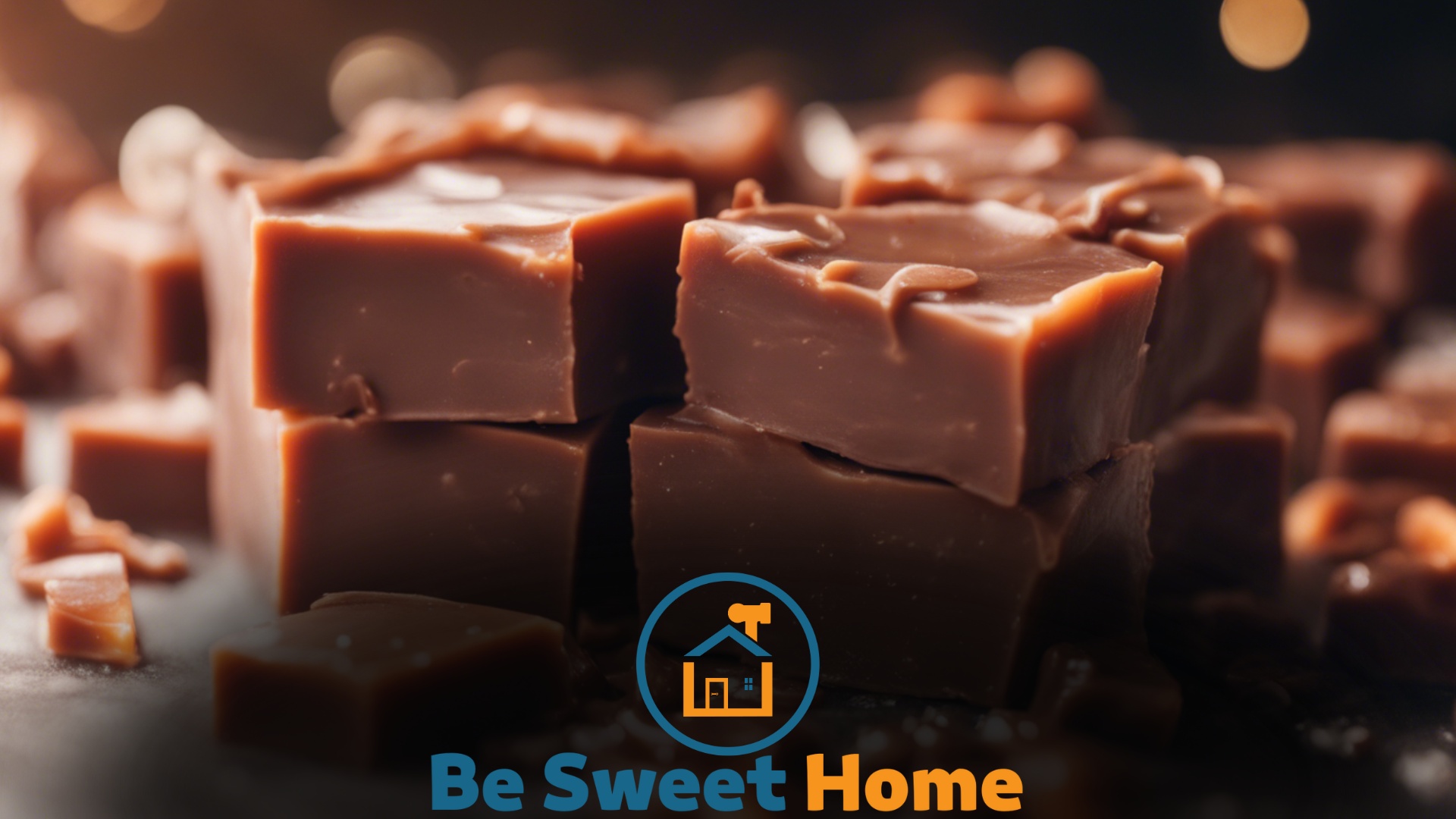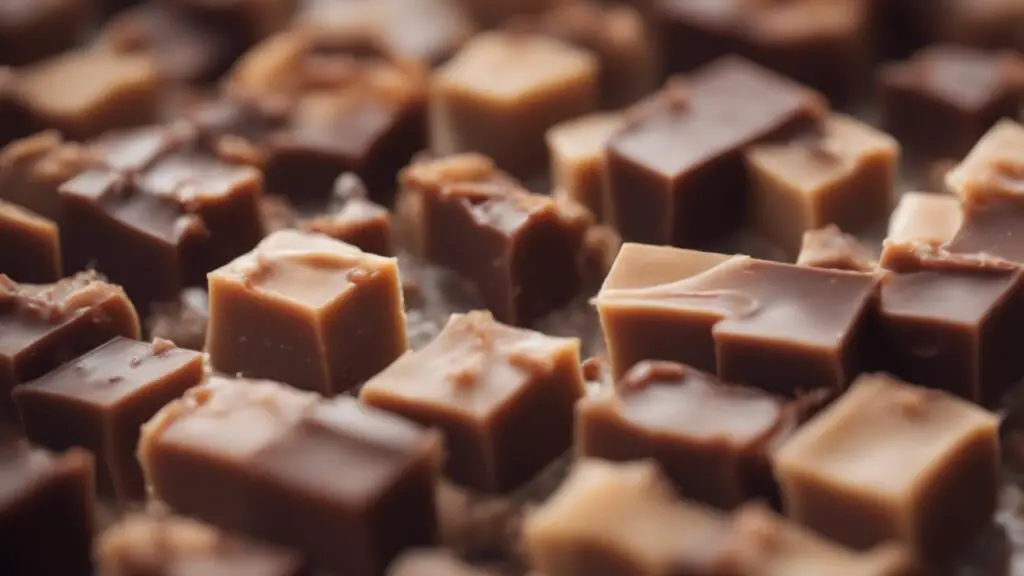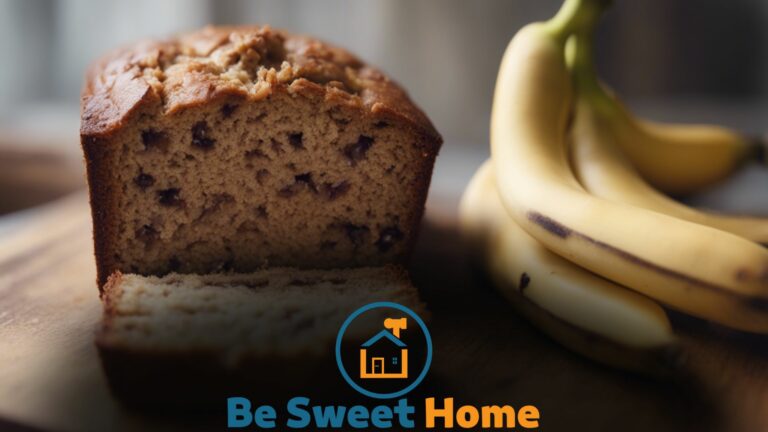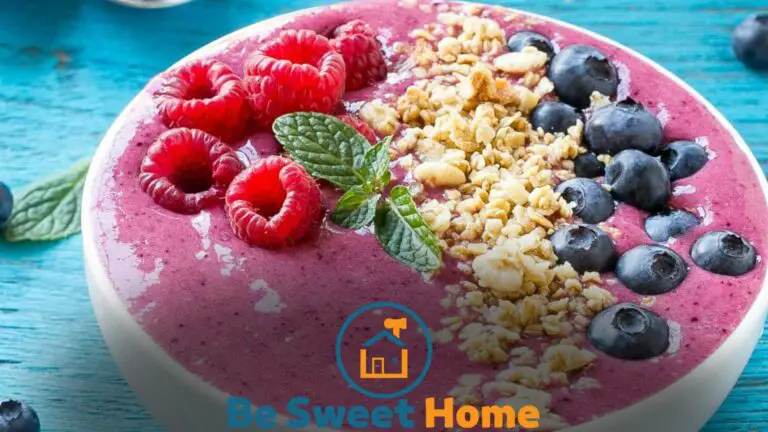

To make the best fudge, combine quality chocolate, condensed milk, and butter, then chill. Stir these ingredients smoothly and heat gently for a creamy texture.
Crafting the perfect fudge is both an art and a science, requiring a precise blend of simple ingredients and a touch of culinary finesse.
This confectioner’s delight, rooted in tradition, brings joy to any dessert table and promises a rich, melt-in-your-mouth experience.
The key to superior fudge is carefully selecting ingredients, precise cooking times, and the right cooling process.
With the right technique, you can create a delectable treat that strikes the perfect balance between soft and firm, ensuring every piece is a bite of pure bliss.
Perfecting your fudge-making skills can transform you into the star of bake sales, holiday gatherings, and sweet, impromptu moments.
The Sweet History of Fudge


Fudge is a classic treat known for its rich texture and creamy taste. This delightful confection holds a special place in many hearts and kitchens worldwide.
Its journey from a local sweet to an international sensation is as fascinating as the delicious treat. As we stir through the past, we discover fudge’s origins and global love.
Origins and Evolution
The exact birthplace of fudge is a topic of sweet debate. Many believe it began in the late 19th century in the United States.
Some say it was a happy accident when a batch of caramels went awry—or “fudged.” The mishap led to the creation of something truly remarkable.
Fudge quickly gained popularity, especially among Vassar College women, who made and sold the confection for charity events.
Over time, fudge-making evolved. Recipes passed down through generations have stood the test of time, often guarded as family treasures.
Cooking methods have also diversified; some prefer the traditional stovetop approach, while others opt for modern microwave techniques.
Fudge Around the World
As fudge spread globally, many cultures embraced and adapted it. Each country added its spin, creating unique and mouthwatering variations.
They have their version called cioccolato fudge in Italy, infused with Italian hazelnuts.
The British Isles are famed for their clotted cream fudge, a luxurious treat that melts in the mouth.
| Country | Fudge Variations |
|---|---|
| Italy | Cioccolato Fudge with Hazelnuts |
| UK | Clotted Cream Fudge |
| France | Beurre de Cacahuète Fudge |
Today, international fudge festivals celebrate the diversity and creativity found in fudge recipes.
Artisans from around the globe gather to share their unique twists on this classic confection.
The love for fudge continues to grow, as each bite reminds us of its sweet, storied history.
Essential Ingredients for Classic Fudge
Mastering the classic fudge means starting with the right elements. The journey to creamy, smooth, and irresistible fudge begins with its base ingredients.
Chocolate Choices
Chocolate sets the mood for your fudge adventure. Use high-quality baking chocolate for the best taste. Here are the top picks:
- Semi-sweet chocolate – balances sweetness with rich flavor.
- Milk chocolate – offers a creamier, lighter taste.
- Dark chocolate – gives a deep, intense cocoa experience.
Chips or bars both work. Make sure they melt well.
Sugar and its Alternatives
Sweetness in fudge is critical. Granulated sugar is traditional, but there’s room to play:
| Alternative | Description |
|---|---|
| Brown sugar | Adds a hint of molasses flavor. |
| Coconut sugar | Brings a caramelized, toasty edge. |
| Honey or Maple Syrup | Injects natural sweetness. |
The Role of Dairy
Dairy turns simple ingredients into divine fudge. It adds creaminess and texture. Use these:
- Heavy cream – offers richness and velvety texture.
- Butter – boosts flavor and glossiness.
- Condensed milk – a shortcut to sweetness and smoothness.
Quality dairy means quality fudge. Don’t cut corners!
Step-by-step Guide to Fudge Perfection
Welcome to the ultimate journey to fudge perfection. Making the best fudge doesn’t have to be a tricky affair.
Our Step-by-Step Guide to Fudge Perfection will lead your way to creating the creamiest and most delectable fudge.
Precision and patience are key; we’re here to walk you through each stage. So, grab your apron, and let’s start our sweet adventure toward fudge mastery!
Melting and Mixing Techniques
Fudge begins with a smooth blend of ingredients. The secret? Low heat and constant stirring. Start with a heavy saucepan to evenly distribute the heat.
Combine sugar, milk, and butter. Keep the flame low to prevent burning. Stir slowly but constantly.
This avoids sugar crystals and ensures a velvety texture. Once melted, add your chocolate or flavorings and blend them into the creamy mix.
Pro tip: Stir with a wooden spoon. It’s gentle on the mixture and doesn’t overheat.
Temperature Precision
Candy thermometers are your best friend for making perfect fudge. Clip one to your saucepan and monitor the heat closely.
Wait for the mix to reach the softball stage, usually 234-240°F (112-115°C). Test by dropping a bit of the mix into cold water.
If it forms a softball, you’re on track. Stay vigilant. Overcooking leads to hard fudge; undercooking, a sticky mess.
Keep this table handy for temperature checkpoints:
| Stage | Temperature |
|---|---|
| Soft Ball | 234-240°F (112-115°C) |
| Final Target Temp | Depends on recipe |
Setting and Cooling
The final move is setting your fudge. Pour your molten goodness into a lined pan. Smooth out the top with a spatula for an even setting.
The fudge needs to cool down naturally. Don’t rush it with the fridge, as this could lead to unwanted moisture.
Room temperature is your go-to for cooling. Give your fudge several hours to set. Overnight works, too.
The result? A firm yet creamy texture that melts in your mouth. When it’s ready, cut it into cubes and serve to the delight of friends and family.
Remember, waiting is the hardest part. Resist the urge to peek or poke. Your patience will pay off with the most scrumptious fudge.
Common Fudge-making Mistakes to Avoid
Entering the sweet world of fudge-making can lead to the richest and creamiest treats. Yet, it’s easy to falter along the way.
Let’s discuss simple slips that can make or break your batch. Keep these key pointers in mind for flawless fudge every time.
Overcooking Pitfalls
Patience is a virtue, especially when making fudge. One of the most common missteps occurs before the treat leaves the pot.
Overcooking affects the flavor and can ruin the smooth, creamy texture we all love.
- Set a precise timer and stick to it.
- Use a candy thermometer to monitor the temperature closely.
- Keep an eye out for that softball stage.
Texture Troubles
Fudge should melt in your mouth, not crumble or harden like a rock. The texture is key, and achieving the perfect consistency can be tricky.
- Avoid stirring the mixture too much once it’s off the heat; it invites sugar crystals.
- Let it cool before you beat it. This makes for a smoother fudge.
- If you grease your pan too much, wipe the excess away for the perfect set.
Fixing Common Errors
All is not lost if you hit a snag. There are fixes for the fudge faux pas!
| Error | Quick Fix |
|---|---|
| Too soft or runny | Reheat gently and add a bit more sugar |
| Meltdown with a spoonful of water, re-beat off heat | Add a touch of cream and stir over low heat |
| Grainy texture | Meltdown with a spoonful of water, re-beat off the heat |
Variations on the Traditional Fudge Recipe
Who doesn’t love the creamy texture of traditional fudge? It’s a classic sweet treat that never goes out of style. Yet, you can always spruce it up with delightful twists.
Fudge can cater to all taste buds and preferences, from nuts to fruits, and even make dietary adaptations!
Nutty Additions
Fudge and nuts are a match made in heaven. Nuts add crunch and flavor that elevate a simple recipe. Here are some nutty stir-ins to try:
- Walnuts: For a classic touch.
- Almonds: Sliced for a delicate crunch.
- Pecans: Toasted for extra aroma.
- Hazelnuts: Chopped for a unique twist.
Incorporating Fruits and Flavors
Dried fruits can infuse fudge with sweet tanginess and chewy texture. Flavor extracts, on the other hand, introduce new dimensions. Here are some combinations to explore:
| Fruit | Extract |
|---|---|
| Raisins | Vanilla |
| Cherries | Almond |
| Apricots | Orange |
| Cranberries | Rum |
Dietary Adaptations
Fudge can be inclusive of dietary preferences. Swaps ensure everyone savors its sweetness.
Here’s a snapshot of variations to make fudge suitable for different diets:
- Vegan: Use coconut oil instead of butter and almond milk to replace dairy.
- Gluten-Free: Confirm all your added ingredients are certified gluten-free.
- Sugar-Free: Choose sugar substitutes like stevia or erythritol for sweetness without the sugar spike.
Serving and Storing Your Homemade Fudge
Crafting the perfect batch of homemade fudge is an art. Once you have your fudge perfectly set, it’s time to dive into the details of serving and storing this delicious treat.
Whether you display your creation at a gathering or cherish it over time, these guidelines will ensure that every bite remains as delectable as the first.
Cutting and Presentation Tips
A clean cut makes each piece of fudge look as good as it tastes. Follow these steps to ensure your fudge is visually appealing and ready to serve.
- Use a sharp knife: Heat it under hot water and dry it off for a smooth cut.
- Score the top: Gently mark lines where you’ll cut for even pieces.
- Clean between cuts: Wipe your knife to prevent sticking and keep edges neat.
Preservation for Freshness
Storage is key to keeping fudge fresh. Here’s how to maintain that just-made freshness for longer.
- Wrap it up: Encase fudge in wax paper, then airtight plastic to keep air out.
- Cool and dark: Store in a cool, dark place. Fudge loves the refrigerator.
- Separate flavors: Keep different types apart to preserve unique tastes.
Gifting Ideas
Fudge makes a beautiful gift. Here’s how to impress friends and family with your homemade sweet.
| Container Type | Decoration Tips |
|---|---|
| Mason jars | Tie with a ribbon, add a custom label |
| Decorative tins | Fill with colorful tissue, place fudge in mini cupcake liners |
| Clear treat bags | Stack fudge, seal with a sticker, decorate with a twist tie |
Frequently Asked Questions
What is the Secret to Good Fudge?
The secret to good fudge lies in precise ingredient measurement, maintaining the correct cooking temperature, consistent stirring, proper beating once the fudge reaches the soft-ball stage, and timely pouring into the pan to cool.
What is the Secret to Smooth Fudge That is Not Gritty?
The secret to smooth fudge is precise temperature control, which avoids sugar crystallization. Use a candy thermometer.
Stir ingredients until dissolved, then do not stir once boiling. Cool the mixture without stirring before beating it to a smooth consistency.
Who Makes the World’s Best Fudge?
Determining who makes the world’s best fudge is subjective, as taste preferences vary.
Artisan confectioners and renowned sweet shops compete for this title with unique recipes and quality ingredients.
What is Traditional Fudge Made of?
Traditional fudge typically comprises sugar, milk, butter, and flavorings like chocolate or vanilla.
This sweet treat is cooked to a soft-ball stage and then beaten until creamy.
What Ingredients Are in the Best Fudge?
Traditional fudge recipes include chocolate, sugar, butter, and milk or cream for a rich, smooth texture.
Conclusion
Mastering the art of fudge-making is truly rewarding. With these steps, creating delectable fudge at home is simple.
Share your treats with loved ones or indulge solo. Remember, practice makes perfect—soon, you’ll be the go-to fudge aficionado. Ready for another batch?
Your sweet journey awaits!







